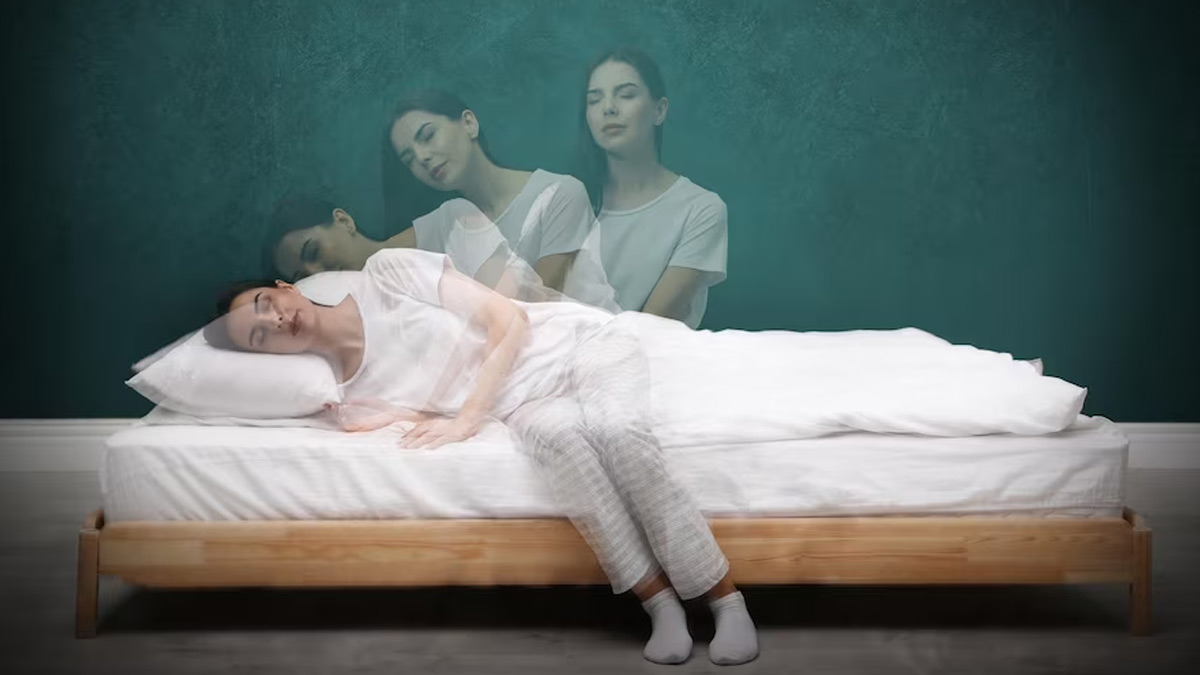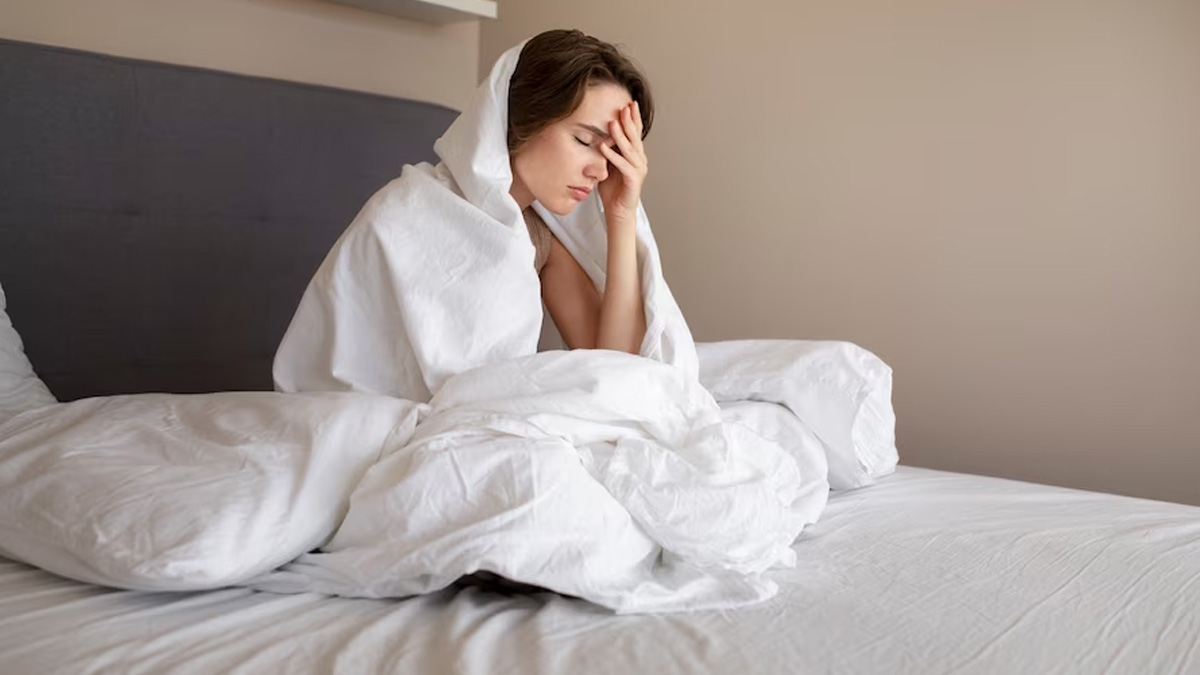

Have you ever experienced sleepwalking? It’s that strange feeling of waking up in the middle of the night, only to find yourself wandering around without knowing how you got there. Sleepwalking, also known as somnambulism, is a sleep disorder characterised by engaging in complex activities while not fully awake. This typically occurs during deep sleep, particularly in the first few hours after falling asleep.
We spoke to Dr Ravindra Agrawal, MBBS, DMP, MPM, MRCPsych, Manipal Hospital, Goa, who explained sleepwalking, its causes, trigger factors, and treatment.

Dr Agrawal said, “During a sleepwalking episode, the individual may get out of bed and walk around, often with their eyes open but in a disconnected and unaware state. Sleepwalkers may engage in various activities, such as talking, opening doors, or even driving, all while being asleep.”
According to the Sleep Foundation, the prevalence of sleepwalking is more in children than adults. It is also found that the incidence of sleepwalking peaked in children between ages 10-13.
How Common Is Sleepwalking?
Dr Agrawal highlighted, “While sleepwalking can affect people of all ages, it is more common among children, with an estimated 1 in 5 experiencing at least one sleepwalking episode. Most children tend to outgrow this behaviour by the time they reach puberty, though it may persist into adulthood in some cases.”
Also Read: Do You Talk In Sleep? Expert Explains Sleep Talking, Its Causes, And Treatment
What Causes Sleepwalking?

The exact cause of sleepwalking remains unknown, but there is evidence to suggest a genetic predisposition i.e. it runs in families. Individuals with a family history of sleepwalking or night terrors are more likely to experience sleepwalking themselves.
Dr Agrawal said, “Neurologically, sleepwalking occurs during the Non-Rapid Eye-Movement (NREM) stage of sleep. During a sleepwalking episode, the brain is in a state of partial arousal, and certain motor areas may become activated, leading to purposeful movement. However, the brain’s higher cognitive centres, responsible for awareness and decision-making, are not fully awake. This state of partial arousal and partial sleep is said to result in sleepwalking.”
Other possible theories include an imbalance of neurotransmitters, such as serotonin and Gamma-Aminobutyric Acid (GABA), temporary disconnection of brain areas involved in coordinating activities, and consciousness and abnormal activity in the basal ganglia, which is a deep-seated brain region involved in coordinating movements.
Triggers Of Sleepwalking

Additional factors which can trigger or exacerbate sleepwalking episodes are:
- Sleep deprivation
- Stress
- High fever (especially in children)
- Alcohol consumption
- Drug use
- Certain medications
- Abrupt waking from deep sleep due to external stimuli
- Waking up to use the toilet
What Happens During Sleepwalking?
Dr Agrawal said, “Sleepwalking episodes can range from simple actions, such as sitting up in bed and looking around with a brief confusion, to more complex behaviours, such as getting out of bed, walking about, opening cupboards, dressing, or even eating. In extreme cases, individuals may walk out of their homes and carry out elaborate activities, such as driving a car while still asleep, but this is rare.”
Dr Agrawal added, “Although sleepwalkers often have their eyes open, they do not recognise others and may not respond coherently if spoken to. Most episodes last less than 10 minutes, and upon waking or returning to bed, individuals usually have little to no memory of the event.”
Also Read: Can You Compensate For Lost Sleep? Expert Debunks The Myth Of Weekend Catch-Up
What To Do If I See A Family Member Sleepwalking?
Dr Agrawal suggested, “Your priority when someone in your family sleepwalks is to ensure their safety. It is essential not to startle or shout at the person, as this may be disturbing or hurtful. Instead, gently guide them back to bed while offering reassurance. Physical restraint should not be used unless there is an immediate danger.”
How To Help Someone Who Sleepwalks?
Dr Agrawal noted, “While occasional sleepwalking episodes typically do not require medical attention, it is advisable to seek professional advice if sleepwalking occurs frequently, poses a risk of injury, or persists into adulthood.” A trained specialist, such as a psychiatrist or neurologist or a dedicated sleep centre will undertake a detailed sleep history and, if needed, sleep studies which would include electroencephalography (EEG) and a range of physiological parameters.
Is There a Treatment For Sleepwalking?

Although there is no specific treatment for sleepwalking, adopting healthy sleep habits can be beneficial. Dr Agrawal listed some of the measures that you should follow:
- Establish a regular sleep schedule
- Ensure to set up a dark and quiet bedroom environment
- Limiting caffeine-containing drinks before bedtime
- Finding relaxation techniques, such as warm baths or reading, may promote better sleep quality
- For children with consistent sleepwalking patterns, gently waking them 15-30 minutes before the usual episode time might disrupt their sleep cycle and prevent sleepwalking
- In some cases, medications like benzodiazepines or antidepressants may be prescribed to reduce the frequency of sleepwalking episodes, especially when there is a risk of serious injury
Bottomline
Dr Agrawal concluded, “Preventing accidents during sleepwalking episodes is crucial. Clearing sleepwalkers’ pathways of breakable or hazardous objects and locking windows and doors can help minimise risks. For children who experience sleepwalking, it is recommended to avoid having them sleep on the top bunk of a bunk bed and to consider using safety gates at the top of stairs.”
Disclaimer
The information in this article is provided by the expert and is for informational purposes only. Hence, we advise you to consult your healthcare expert for a diagnosis and treatment based on your needs and medical history.
اكتشاف المزيد من ينبوع المعرفة
اشترك للحصول على أحدث التدوينات المرسلة إلى بريدك الإلكتروني.
